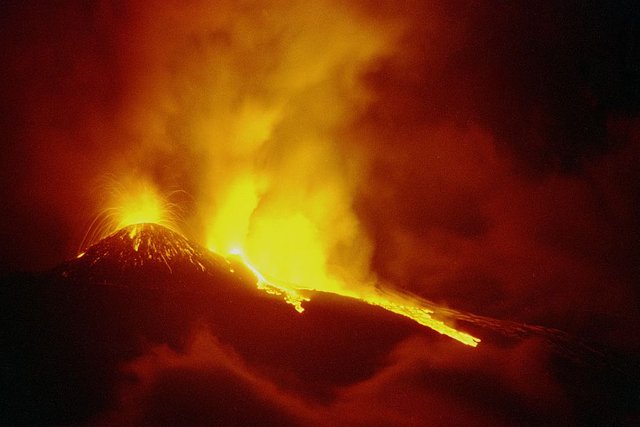How the natural catastrophe of 536 AD helped end the Roman Empire and usher in the Dark Ages
Rome was already struggling by 536 AD. Migrants coming in from what is now Ukraine and Kazakhstan were pushing into Europe, displacing people, who in turn tried to enter the relatively safe lands of the Roman Empire.
Things had got so bad that the Empire had removed all it's legionaries from Britain in order to redirect them to defend Rome.
But worse was to come: the catastrophe of 536 AD.
Here is what we know
The historian Procopius, who was part of the Emperor Justinian's court wrote that "it came about during this year that a most dreaded portent took place. For the sun gave forth its light like the moon without brightness during this whole year, and it seemed exceedingly like the sun in the eclipse, for the beams it shed were not clear nor such as it is accustomed to shed. And from the time, when this thing happened men were neither free from war nor pestilence nor any other thing leading to death"
He knew it wasn't an eclipse because eclipses don't last that long. But he struggled to explain what else it could be.
John the Lydian, also known as John Lydus, was another administrator in Justinian's court - he recorded that "The sun became dim ... for nearly the whole year ... so that the fruits were killed at an unseasonable time." Michael the Syrian reported that "the sun became dark and its darkness lasted for eighteen months. Each day it shone for about four hours, and still this light was only a feeble shadow ... the fruits did not ripen and the wine tasted like sour grapes."
The Japanese Emperor Senka wrote in 536 AD, "Yellow gold and ten thousand strings of cash cannot cure hunger. What avails a thousand boxes of pearls to him who is starving of cold?"
And a Norse poem of the time Voluspá, sang "The sun turns black, earth sinks in the sea. Down from heaven, stars are whirled" (the words are sung by the Seeress to the god Odin).
So what was going on?
Initially the reports of these historians were dismissed by modern scholars, even though by Justinian's era the Romans were exceptionally skilled in science and engineering and not given to superstition.
Then in 1994, a study of tree-ring data by Professor Mike Baillie of Queens University of Belfast, showed that there was a sudden rate of decline in tree growth in the mid 530's, which lasted 15 years.
An archaelogical study of Sweden during this time by Hans Göthberg showed that the population halved and in the uplands near the Arctic Circle, it dropped by 75%. (The Viking raids on Britain and Northern France started after this period, and it is possible that they were motivated to seek fertile land in the warmer south because they could no longer farm theirs).
In 2008, analysis of ice cores from both the Greenland Arctic and Antarctic showed heightened levels of sulphur. Because the sulphur was present in both the north and south, scientists think that whatever happened, occured in the tropics, and was most likely a volcano erruption, which caused a "volcanic winter" where so much dust and ash is spewed into the atmosphere, it blocks the sun and causes the climate to chill and plants to struggle to grow.
The question is, which volcano was it?
Scientists now believe that the people who lived in about 536 AD experienced two catastrophic volcanos.
The first was the eruption of Ilopango in El Salvador, which has been dated to about 535 or 536 AD.
Analysis of the ice cores also indicate that there was another enormous volcanic erruption in around 539 or 540 AD. This was corroborated by pumice-lodged wood found in 1983 on Rabaul in Papua New Guinea, dated to 540 AD. The town of Rabaul no longer exists - it was obliterated by another erruption of it's volcano in 1994.
Therefore the second volcano was likely an eruption of Rabaul in Papua New Guinea, and not Krakatoa as some claim.
The consequences
Volcanic winters, like nuclear winters, cause the sun to be blocked, and therefore plants to struggle. This causes food shortages and outright famine. Some historians believe that the shortage of food contributed to the collapse of the Mayan civilization, which occured at this time.
There was also a tremendous movement of people in Europe, as starving barbarians tried to move into the richer Roman Empire, which they perceive to be a place of plenty.
In 540 AD we also have the notorious "Plague of Justinian", which refers to to a plague that broke out at this time, killing millions. Scientists now believe that drought caused rodents carrying the fleas that spread plague to move from their normal habitats in the wild, to cities, where they passed the fleas to the black rat (which normally doesn't carry these fleas). And they passed it to humans. It is estimated that a third of the population of the Roman Empire died from the plague of Justinian.
So the catastrophe volcanos of 536 AD and 540 AD ended two civilisations - the Mayan one and the Roman one, and ushered in the Dark Ages which lasted 700 years.

that was interesting and a nice read.
A downvote was applied to partially counter earlier whale votes as an experiment to reduce whale domination of voting influence. Not intended to express an opinion on the content nor result in a net reduction of rewards or reputation (automated notice)
Downvoted to counteract the upvotes from @curie bots and other whales.
More info here: https://steemit.com/test/@abit/whales-no-up-voting-test
It is read quickly and easily. Interesting article, good luck to you!